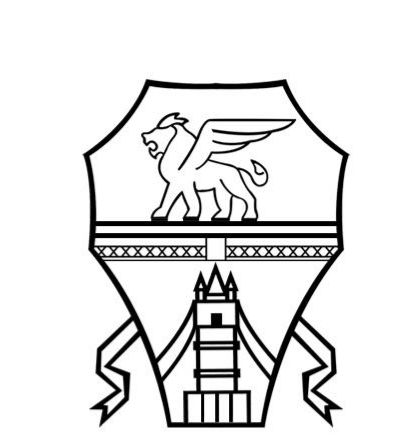If you’re planning to create a website, you’ve probably heard of it before WordPress plugin, and now you will want to know more.
What is a WordPress plugin? What are plugins for, how are they used?
The existence of plugins is one of the features that allowed WordPress to become the first system in the world to build websites.
In fact, it is precisely the plugins that allow WordPress to be so flexible and customizable.
Indeed, a plugin is a program that adds functionality to your website, and we’ll be looking at what it is and how it works in a little while.
You can add as many plugins to WordPress as you want to customize your site as you wish.
Be careful to choose only good quality plugins, with great reviews and often updated by the developers.
Using poor quality or little-known plugins can be risky, both in terms of security problems and the possibility of containing bugs that may not make your site work.
Along with the theme, the plugins allow you to get a perfect website for your business.
There are plugins suitable for all websites and others that are very useful for certain types of sites.
Some will help you manage your site or improve its performance, while others will allow you to add elements to your pages and will be useful for visitors.
As you can imagine, then, plugins are very powerful tools.
You’re getting an idea about what is a plugin?
Well, in simple terms, these are fundamental tools for expanding the possibilities of your platform.
In this guide you will understand what are pluginsand their important role in creating a website , we’ll see how they install and help you figure out which ones are best to use on your site.
WordPress plugins: first of all, what are they?
Let’s immediately see the definition of what is a plugin.
Plugins are pieces of code or real programs that interact with WordPress to expand its functionality.
Anyone with the skills can develop a plugin and make it available to all users as a free version in the WordPress plugin directory.
You are probably using a smartphone; what do you do when you want to add functionality to your mobile?
Download and install an application (games, spreadsheets, organizers, satellite navigators etc.).
A WordPress plugin is like an application for your smartphone.
An example of a plugin could be the one that allows you to leave comments on any blog or website.
Adding new features to a website can be expensive (not to mention building a site from scratch), especially if the required functionality is complex and you have hired a team of web developers.
To understand more fully what is a plugin, you have to think of the WordPress + Plugin system as a method to get a web presence very quickly and with zero or very low costs, whether you want to create a showcase site, or create a blog .
As your business grows you can add functionality thanks to plugins (without wasting resources on components that you may never use).
If you want, with WordPress and plugins you can completely renew your site whenever you want.
You can easily deduce that knowing how to use (and choose ..) WordPress plugins to improve and enhance your site is a determining factor for your growth in the network.
There are hundreds of WordPress plugins.
Some are free, others for a fee and are found under the most disparate categories, each of which deals with enhancing a specific functionality, from graphics toSEO, from contact with users to payment methods.
How to install a plugin, let’s see the steps
Installing and using plugins is very simple, because no coding knowledge is required, but it is important to have some precautions.
One of them is to read all the instructions that are provided before installing the plugin, to find information such as the WordPress update needed to install it.
Well, let’s begin to see how to download and install it directly from the “Administration Panel”:
- Go to the WordPress Administration Panel and click on Plugins> Add New ;
- Now in the search field that you will find on this page, enter the name of the plugin you are interested in;
- Once found click on Install now and finally,
- Click on Activate Plugin .
This is the procedure when looking for a plugin through the WordPress internal engine.
Through this method you will be able to install only the free plugins that are available in the WordPress directory.
Some of these plugins have a free version, which can be installed this way, but to use the premium version you will need to enter your license within the plugin settings.
In other cases, it is necessary install plugins manually.
I’ll explain the procedure immediately.
How to install a plugin, let’s see another way to do it
If, on the other hand, you prefer to download a plugin and manually upload it to your Dashboard, this is the procedure:
- Once you have found the plugin on any plugin archive,
- such as it can be the gallery of WordPress plugins, or you have purchased a premium plugin, download it.
- This will present itself as a .zip or .rar archive file.
- The plugin .zip file does not need to be unzipped;
- Go to Plugins> Add New ;
- Click on the Upload Plugin button ;
- From the Browse button, search for the .zip file on your computer and select Install ;
- Activate the plugin and start using it.
However, there is also another method for install WordPress plugins, and to do so you will need to connect to your site via FTP.
- First, unzip the plugin .zip folder;
- Now open an FTP client (a program like FileZilla ) and connect to the server where your site resides;
- Once here, navigate to the wp-content> plugin folder ;
- Upload the plugin folder inside it;
- Access your Dashboard and click on Plugin , you will find the plugin you just uploaded;
- Select it and click Activate , enabling the plugin.
Once it has been activated, just follow the information to configure it in the best possible way.
WordPress plugins: what are the best plugins for WP?
There are hundreds of plugins on the web and it’s often hard to figure out which one would be ideal for your site.
Some free tools are really great, while others are better to buy, as there is no viable alternative at no cost.
Remember that a premium resource is usually updated often, making incompatibilities with the latest versions of WordPress very rare.
Furthermore, you must always consider that too many plugins risk decreasing the performance of your platform, making it slow to load.
For this I recommend never exceeding the number of 15 plugins on your WordPress site.
If you feel a little lost and can’t choose among the countless existing plugins for WordPress (57,000 in the official directory alone).
In order not to get bored and waste your time we have organized this detailed review of 100 WordPress plugins in different sections:
- SEO management
- Improve site speed
- Maintenance
- Navigation and Usability
- Site security
- Management and Monitoring
- Back up data, Back-End
- Create and Manage a Community and many others
Don’t miss this great opportunity to get to know many WordPress plugins completely free.
Before concluding, let’s do a brief review …
WordPress plugins, what are they?
They are codes or programs that interact with WP to expand its functionality.
How to install a plugin on WordPress?
The easiest and fastest way is to add the new plugin from the admin panel. First you run the installation and then it is activated with a simple click.
Does installing a WordPress plugin require specific knowledge?
No computer knowledge is required as a professional programmer, you just need to have some foresight.
WordPress plugins: what are the best plugins for WP?
There are so many that it is really impossible to say which are the best ever. It all depends on the desired function and the desired ultimate purpose.
Conclusion
In this article we have seen what is a WordPress plugin and how to install them.
As you may have noticed, with a few clicks you can significantly increase the basic functionality of your WordPress site.
Whatever aspect you want to improve on your platform, you can achieve great results with the use of the right tools.
Did you finally understand what a plugin is? Do you have any questions?
What are the best plugins you have used on your online space?
Do you use free tools or have you even purchased some premium ones?
Share your experience with us by leaving a comment in the box below.




